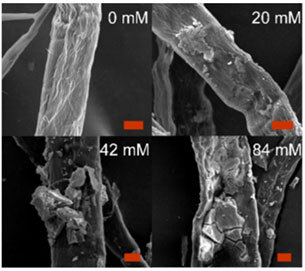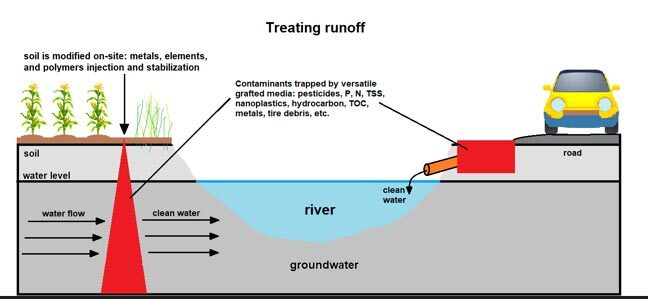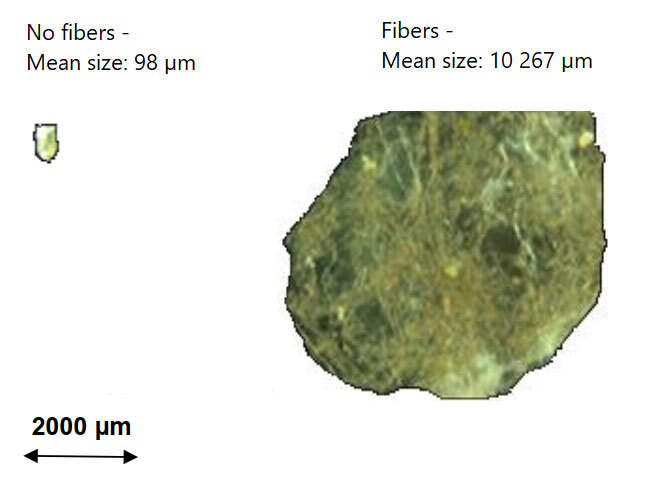
Our drinking water filtration and wastewater treatment plants were designed at a time when certain contaminants had not yet been detected in the environment. These so-called emerging contaminants, such as microplastics/nanoplastics and perfluorinated compounds, are refractory substances, which are hardly, if ever, removed in our existing plants.
Moreover, some types of industrial wastewater or runoff are not currently treated due to the very large flows involved or the complexity of the process.
Researchers at ÉTS are tackling these problems by synthesizing new materials.
Versatile Superfilters for Drinking Water Plants
Sand filters used for drinking water production worldwide do not capture emerging contaminants. Our team is developing versatile and advanced grafted media designed to capture specific pollutants using a lock and key principle. For example, a positively charged metal grafted, such as aluminum or iron, will promote the adsorption of negatively charged substances, while another hydrophobic grafted function will be ideal for attracting oils or petroleum products. These grafted functions—products of the circular economy—are manufactured through chemical synthesis and integrated into recycled crushed glass.

In-Situ Filter Media for Stormwater Runoff
Even today, agricultural and urban runoff is not treated in plants due to technical and economic constraints. Yet, these large volumes of water contain their share of contaminants. A simple way to cushion the environmental impact is in situ processing through passive adsorption and filtration.
In fact, by functionalizing the soil with the addition of multi-purpose filter media at certain critical points—between the source of contamination and a fragile ecosystem, a drinking water source or a strategic waterway—we capture a portion of the contaminants at the source while limiting their dispersion into the environment.

Superflocs for Wastewater Treatment Plants
Coagulation/flocculation processes—where chemicals are used to clump contaminants together, forming flocs—are commonly used in wastewater treatment. Gravity forces these flocs to settle at the bottom of large settling tanks, where they are separated from clean water. Our team is working on developing superflocculants, i.e. products that attract certain types of contaminants, resulting in much larger flocs that are easier to separate.
In addition to increasing contaminant removal efficiency, these superflocculants reduce the amount of chemicals required and, therefore, the operating costs of wastewater treatment plants.

Conclusion
Population growth, urban densification and climate change all bring their own challenges to maintaining the quality of our water resources. We must improve our existing processes to make them more efficient, robust, sustainable, and affordable.



